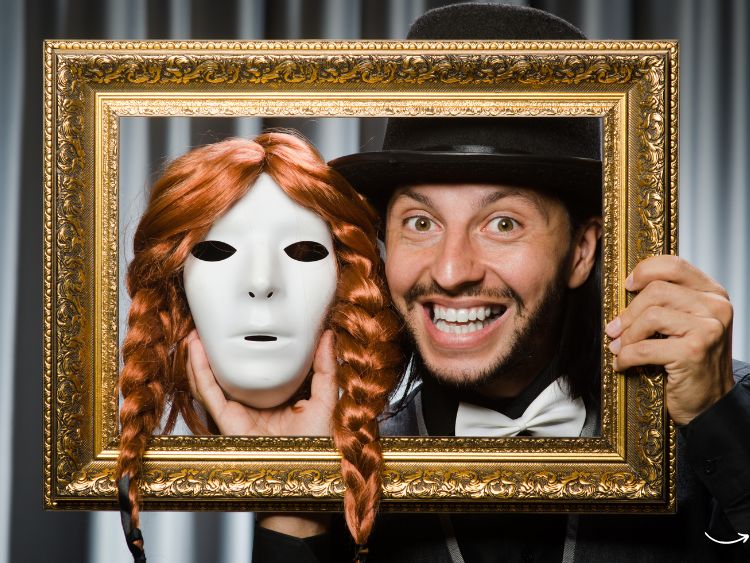Creating realistic fake blood for theatrical performances or film can be a fun and essential part of the production process. Whether you’re working on a horror play, a thrilling action scene, or a spooky Halloween display, having the perfect theatrical blood recipe at your disposal can make all the difference. In this comprehensive guide, we’ll delve into various recipes and methods to make your fake blood look convincingly real while being safe and easy to clean. Let’s get started!
Theatrical blood is a crucial element in many stage productions and films, providing visual impact and enhancing the storytelling experience. But how do you create fake blood that looks realistic? Is it possible to make it non-toxic and washable? This guide will answer these questions and more, offering a variety of recipes and tips to help you achieve the perfect theatrical blood effect.
The Importance of Theatrical Blood in Productions
Theatrical blood is more than just a prop; it’s a tool that adds depth and realism to a performance. Here’s why it’s essential:
- Visual Impact: Blood can signify violence, injury, or death, making scenes more intense and believable.
- Emotional Engagement: Realistic blood effects can evoke strong emotional reactions from the audience, enhancing their connection to the story.
- Professionalism: High-quality blood effects demonstrate attention to detail and professionalism in production design.
Basic Theatrical Blood Recipe
Let’s start with a simple and effective recipe for making theatrical blood using common household ingredients.
Ingredients:
- 1 cup corn syrup
- 1 tablespoon water
- 2 tablespoons red food coloring
- 1 tablespoon chocolate syrup
- A few drops of blue food coloring
Instructions:
- Mix Corn Syrup and Water: In a bowl, combine the corn syrup and water. Stir until well mixed.
- Add Red Food Coloring: Gradually add the red food coloring, stirring continuously until you achieve the desired shade of red.
- Incorporate Chocolate Syrup: Add the chocolate syrup to darken the color and give it a more realistic, opaque appearance.
- Blue Food Coloring: Add a few drops of blue food coloring to deepen the red, making it look more like real blood.
This basic recipe is easy to make and looks convincingly realistic. However, it’s sticky and can stain, so it’s best used in situations where cleanup is manageable.
Advanced Theatrical Blood Recipes
For productions requiring different consistencies or non-staining options, here are some advanced recipes.
Non-Staining Blood Recipe
This recipe is ideal for use on costumes or skin, as it washes out easily.
Ingredients:
- 1 cup dish soap (clear or red)
- 1 tablespoon corn syrup
- 2 tablespoons red food coloring
- A few drops of blue food coloring
Instructions:
- Combine Dish Soap and Corn Syrup: Mix the dish soap and corn syrup in a bowl.
- Add Red Food Coloring: Slowly add the red food coloring while stirring.
- Blue Food Coloring: Add a few drops of blue food coloring to achieve a realistic hue.
Edible Theatrical Blood Recipe
Perfect for scenes where the blood might end up in an actor’s mouth, this recipe is safe to ingest.
Ingredients:
- 1/2 cup corn syrup
- 1/2 cup chocolate syrup
- 1 tablespoon cornstarch
- 1/4 cup water
- Red food coloring
Instructions:
- Mix Corn Syrup and Chocolate Syrup: Combine the corn syrup and chocolate syrup in a bowl.
- Add Cornstarch and Water: Mix the cornstarch with water to create a slurry, then add it to the syrup mixture.
- Red Food Coloring: Add the red food coloring until you reach the desired color.
Techniques for Applying Theatrical Blood
Creating realistic blood effects involves more than just the recipe; how you apply the blood is equally important.
Spattering Technique
For a splattered blood effect:
- Use a Brush or Toothbrush: Dip the brush in the blood mixture.
- Flick the Bristles: Hold the brush near the target and flick the bristles to create a splatter pattern.
Dripping Technique
For a dripping blood effect:
- Use a Dropper or Spoon: Load the dropper or spoon with blood.
- Allow to Drip: Hold it above the target and let the blood drip naturally.
Smearing Technique
For a smeared blood effect:
- Use Your Fingers or a Sponge: Dip them in the blood mixture.
- Smear Across the Surface: Apply the blood in a smearing motion for a messy look.
FAQs
Q: Can I make theatrical blood that doesn’t stain clothes?
A: Yes, using dish soap-based recipes can help create non-staining blood that washes out easily.
Q: Is it safe to use theatrical blood on skin?
A: Most homemade recipes using food-safe ingredients are safe for skin. Always do a patch test first to check for allergies.
Q: How can I thicken or thin the blood?
A: Add more corn syrup to thicken or more water to thin the blood mixture.
Q: Can I use food coloring to adjust the color?
A: Absolutely! Adjusting the amount and type of food coloring can help you achieve the perfect shade of blood.
Q: How do I store leftover blood?
A: Store in an airtight container in the refrigerator. It can last for several weeks.
Summary
Creating realistic theatrical blood is both an art and a science. With the right ingredients and techniques, you can produce blood effects that enhance the realism of your productions without breaking the bank. From basic recipes to advanced, non-staining options, this guide provides everything you need to make your fake blood look convincingly real.
Authoritative Links
For more information on creating theatrical blood and other special effects, check out these resources:
By following these recipes and tips, you’ll be able to create blood effects that add authenticity and drama to any performance.
